Research on Lateral Load Bearing Characteristics of Deepwater Drilling Conductor Suction Pile
Abstract
1. Introduction
2. Conductor Suction Pile Structure and Force Analysis
2.1. Structure of Conductor Suction Pile
2.2. Force Analysis of Conductor Suction Pile
3. Modeling and Solving
3.1. Basic Assumptions
- (1)
- The force and deformation of the suction pile occur within the vertical plane, and the initial shape in the absence of deformation is vertical.
- (2)
- The material of the suction pile is homogeneous, isotropic, and linearly elastic.
- (3)
- Disregard the influence of the inclination of the suction pile on horizontal bearing capacity.
- (4)
- The internal soil within the suction pile moves in conjunction with the suction pile itself, excluding the effects of suction.
- (5)
- The rib of the suction pile is neglected.
3.2. Control Equations
- (1)
- Surface conductor above the mudline
- (2)
- Suction pile below the mudline
3.3. External Forces on the Conductor Suction Pile
3.4. Interaction Force between Conductor Suction Pile and Subsea Soil
- (1)
- Axial and lateral soil forces on the suction pile side:
- (2)
- Lateral soil force at the suction pile tip:
3.5. Bending Stiffness
3.6. Boundary Conditions and Continuity Conditions
3.7. Solution of the Problem
4. Application Examples and Analysis of Influencing Factors
4.1. Basic Parameters of Conductor Suction Pile
4.2. Configuration Method Validation
4.3. Comparison of Conductor Suction Pile and Surface Conductor Results
4.4. Influence of Wellhead Forces on Lateral Load-Bearing Performance of Conductor Suction Piles
4.5. Influence of Subsea Soil Properties on Lateral Bearing Performance of Conductor Suction Piles
5. Conclusions
- (1)
- An analysis model for the deepwater drilling conductor suction pile system was established based on the principles of pile foundation theory and structural mechanics. The governing equations were subsequently transformed into a system of first-order differential equations. To solve the model numerically, a MATLAB program employing the four-stage Lobatto IIIa collocation method was developed.
- (2)
- Compared to the traditional surface conductor, under the same wellhead loads, the conductor suction pile exhibits a reduction of 21.88% in maximum horizontal displacement and lower maximum bending moment. Furthermore, both values are far below the conductor suction pile’s limit horizontal displacement and flexural stiffness (failure state). This clearly demonstrates that the conductor suction pile possesses a higher lateral bearing capacity and a lower operational risk compared to the surface conductor in natural gas hydrate extraction.
- (3)
- The analysis demonstrates that as the wellhead moment increases, both the lateral displacement and bending moment of the conductor suction pile increase, and the rotation center shifts upward. Conversely, with an increase in submerged unit weight, the lateral displacement of the conductor suction pile decreases, while the change in bending moment is minimal, and the rotation center shifts downward. Moreover, a higher soil shear strength results in smaller lateral displacement and bending moment for the conductor suction pile, with the rotation center shifting upward.
Author Contributions
Funding
Data Availability Statement
Acknowledgments
Conflicts of Interest
References
- Bazaluk, O.; Sai, K.; Lozynskyi, V.; Petlovanyi, M.; Saik, P. Research into dissociation zones of gas hydrate deposits with a heterogeneous structure in the Black Sea. Energies 2021, 14, 1345. [Google Scholar] [CrossRef]
- Klymenko, V.; Ovetskyi, S.; Martynenko, V.; Vytyaz, O.; Uhrynovskyi, A. An alternative method of methane production from deposits of subaquatic gas hydrates. Min. Miner. Depos. 2022, 16, 11. [Google Scholar] [CrossRef]
- Quirós, G.; Little, R. Deepwater soil properties and their impact on the geotechnical program. In Proceedings of the Offshore Technology Conference, Houston, TX, USA, 5–8 May 2003. [Google Scholar]
- Akers, T.J. Jetting of structural casing in deepwater environments: Job design and operational practices. SPE Drill. Complet. 2008, 23, 29–40. [Google Scholar] [CrossRef]
- Su, K.H.; Guan, Z.C.; Long, Z.H. Impact of the seabed soil properties on the stability of subsea wellhead for deepwater drilling. Oil Drill. Prod. Technol. 2012, 34, 7–10. [Google Scholar]
- Su, K.H.; Guan, Z.C.; Su, Y.N. Mechanical stability analysis of subsea wellhead for deepwater drilling. Oil Drill. Prod. Technol. 2008, 30, 1–4. [Google Scholar]
- Guan, Z.H.; Su, K.H.; Su, Y.N. Analysis on lateral load-bearing capacity of conductor and surface casing for deepwater drilling. Acta Pet. Sin. 2009, 30, 285–290. [Google Scholar]
- Jizu, X.U.; Qingzeng, S.H.I.; An, S.O.N.G.; Hongyan, D. The first application and design of suction anchor in domestic offshore engineering. China Offshore Oil Gas (Eng.) 1995, 7, 32–36. [Google Scholar]
- Hunag, S.T.; Wang, H.C.; Liu, B.; Nie, X.M.; Jiang, Z.L. Installation technology of LvDa 32-2mop suction pile platform. China Shipbuild. 2012, 53, 184–188. [Google Scholar]
- Liang, G.Q.; Qi, J.L.; Wu, B.B.; Duan, L.Z.; Hu, S.F. Application of deep-water suction anchor in Liuhua 16-2 project. China Pet. Chem. Ind. Stand. Qual. 2021, 41, 85–86. [Google Scholar]
- Nole, M.; Daigle, H.; Cook, A.E.; Malinverno, A.; Flemings, P.B. Burial-driven methane recycling in marine gas hydrate systems. Earth Planet. Sci. Lett. 2018, 499, 197–204. [Google Scholar] [CrossRef]
- Zhang, B.; Pan, Z.; Cao, L.; Xie, J.; Chu, S.; Jing, Y.; Lu, N.; Sun, T.; Li, C.; Xu, Y. Measurement of wellbore leakage in high-pressure gas well based on the multiple physical signals and history data: Method, technology, and application. Energy Sci. Eng. 2024, 12, 4–21. [Google Scholar] [CrossRef]
- Shaker, S.S.; Services, G.A. A New Perspective on Shallow Water Flow (SWF) Prediction and the Prevention of Sinking Well-Heads in Deepwater Settings. Recorder 2015, 40, 34–40. [Google Scholar]
- Zhang, J.H.; Sun, G.L.; Yan, D.; Lu, X.B. Geotechnical centrifugal simulation research and analysis of suction foundation of offshore platform. Ocean Eng. 2004, 22, 90–97. [Google Scholar]
- Liu, J.B.; Li, Y.F.; Liu, J.D. Finite element analysis of soil plug formation during suction anchor sinking. Water Sci. Eng. Technol. 2007, 03, 39–42. [Google Scholar]
- Liu, X.K.; Lu, Q.; Lu, S.W.; Liu, C.L.; Guo, S.L. Vacuum penetration and ultimate uplift bearing capacity of low skirt suction pile. Geotech. Mech. 2018, 39, 2089–2098. [Google Scholar]
- Wang, P.; Wang, X.F.; Zhang, X.F. Finite element analysis of bearing characteristics of deep-water suction anchor foundation in clay. Constr. Technol. 2019, 48, 24–28. [Google Scholar]
- Liu, S.J.; Huang, Y.; Liu, H.X.; Zhang, M.H.; Li, L.; Zheng, J.L. Experimental study on well construction process and bearing capacity characteristics of deepwater conductor suction pile. China Pet. Mach. 2022, 50, 32–41. [Google Scholar]
- Liu, S.J.; Huang, Y.; Zhang, M.H.; Li, S.Z.; Fu, C.; Zhu, G.J. Study on the subsea wellhead stability of suction bucket foundation. China Offshore Oil Gas 2022, 34, 132–140. [Google Scholar]
- Hogervorst, J. Field trails with large diameter suction piles. In Proceedings of the Offshore Technology Conference, Houston, TX, USA, 5–8 May 1980. [Google Scholar]
- Steensen-Bach, J. Recent model tests with suction piles in clay and sand. In Proceedings of the Offshore Technology Conference, Houston, TX, USA, 7–10 May 1992. [Google Scholar]
- Li, D.Y.; Feng, L.Y.; Zhang, Y.K.; Guo, Y.X. Model tests on lateral bearing capacity and deformation of skirted suction caissons in saturated fine sand under horizontal monotonic loading. Chin. J. Geotech. Eng. 2013, 35, 2030–2037. [Google Scholar]
- Conte, E.; Pugliese, L.; Troncone, A.; Vena, M. A simple approach for evaluating the bearing capacity of piles subjected to inclined loads. Int. J. Geomech. 2021, 21, 04021224. [Google Scholar] [CrossRef]
- Liu, Y.; Li, S.Z.; Sun, G.D.; Liu, R.; Yin, F.; Zhou, L.; Shi, L.; Wang, Y.W.; Song, Y.R. Model test and numerical simulation study on bearing performance of conductor suction pile foundation. China Offshore Oil Gas. 2022, 34, 194–202. [Google Scholar]
- Wang, X.; Li, D.; Li, J. Centrifuge modeling and numerical analysis on lateral performance of mono-bucket foundation for offshore wind turbines. Ocean Eng. 2022, 259, 111925. [Google Scholar] [CrossRef]
- Faul, G.; Audibert, J.; Hamilton, T. Using suction technology for deep installation of structural pipe in deepwater. In Proceedings of the SPE/IADC Drilling Conference and Exhibition, Dallas, TX, USA, 3–6 March 1998. [Google Scholar]
- Sivertsen, T.; Strand, H. New well foundation concept, as used at a Norwegian Sea well. In Proceedings of the SPE Arctic and Extreme Environments Conference and Exhibition, Moscow, Russia, 18–20 October 2011. [Google Scholar]
- Mathis, W.; Strand, H.; Hollinger, G. Case history: How to enable the horizontal development of shallow reservoirs. In Proceedings of the SPE/IADC Drilling Conference and Exhibition, The Hague, The Netherlands, 14–16 March 2017. [Google Scholar]
- Kan, C.; Yang, J.; Yu, X.; Dong, T.; Wu, X.; Liu, M.; Li, C.; Zhang, C.; Fu, J. Load bearing characteristics study on novel deepwater composite drilling conductor by simulation and experimental methods. J. Pet. Sci. Eng. 2018, 171, 289–301. [Google Scholar] [CrossRef]
- Yang, J.; Zhu, G.J.; Li, S.Z.; Li, L.; Guan, S.; Song, Y. Research on well construction model of deep sea resource drilling with suction pile. Pet. Drill. Tech. 2023, 51, 134–139. [Google Scholar]
- Li, S.Z.; Yang, J.; Zhu, G.J.; Li, Z.; Wang, N. Prediction of minimum depth of conductor anchor node in deep-water drilling. Pet. Drill. Tech. 2023, 51, 29–36. [Google Scholar]
- Matlock, H. Correlation for design of laterally loaded piles in soft clay. In Proceedings of the Offshore Technology Conference, Houston, TX, USA, 22–24 April 1970. Paper Number: OTC-1204-MS. [Google Scholar]
- Reese, L.C.; Cox, W.R.; Koop, F.D. Analysis of laterally loaded piles in sand. In Proceedings of the Offshore Technology Conference, Houston, TX, USA, 6–8 May 1974. Paper Number: OTC-2080-MS. [Google Scholar]
- API Recommended Practice 2GEO/ISO 19901-4; Geotechnical and Foundation Design Considerations. American Petroleum Institute (API): Washington, DC, USA, 2011.
- American Petroleum Institute (API). API Recommended Practice 2A-WSD. Recommended Practice for Planning, Designing and Constructing Fixed Offshore Platforms-Working Stress Design, 1st ed.; American Petroleum Institute (API): Washington, DC, USA, 2014. [Google Scholar]
- Liu, M.M. Bearing Capacity and Optimization Design of Composite Bucket Foundation for Offshore Wind Turbine. Master’s Thesis, Tianjin University, Tianjin, China, 2011. [Google Scholar]
- Mohiuddin, M.; Ullah, S.; Hossain, M.; Kim, Y.; Hu, Y.; Ragni, R. Soil failure mechanisms during installation and inclined pullout of stiffened suction caisson in calcareous silt. Appl. Ocean Res. 2022, 125, 103249. [Google Scholar] [CrossRef]
- Qiu, C.; Wang, W.; Yan, Y.; Fu, D.; Yan, S. The optimisation of anti-overturning capacities for tripod suction bucket foundations in clay manuscript submitted to ocean engineering. Ocean Eng. 2022, 264, 112496. [Google Scholar] [CrossRef]
- Zhai, E.D.; Shi, S.G.; Hu, Z.B.; Xu, C.S. An analytical method for laterally loaded large-diameter steel pipe piles based on load-transfer curves. Chin. J. Rock Mech. Eng. 2019, 38, 365–375. [Google Scholar]
- Li, W.; Gao, D.; Yang, J.; Hu, Z.; Abimbola, F. Subsea wellhead stability study of composite casing for deepwater drilling. Ocean Eng. 2020, 214, 107780. [Google Scholar] [CrossRef]
- Hesar, M. Geotechnical design of the Barracuda and Caratinga suction anchors. In Proceedings of the Offshore Technology Conference, Houston, TX, USA, 5–8 May 2003. [Google Scholar]
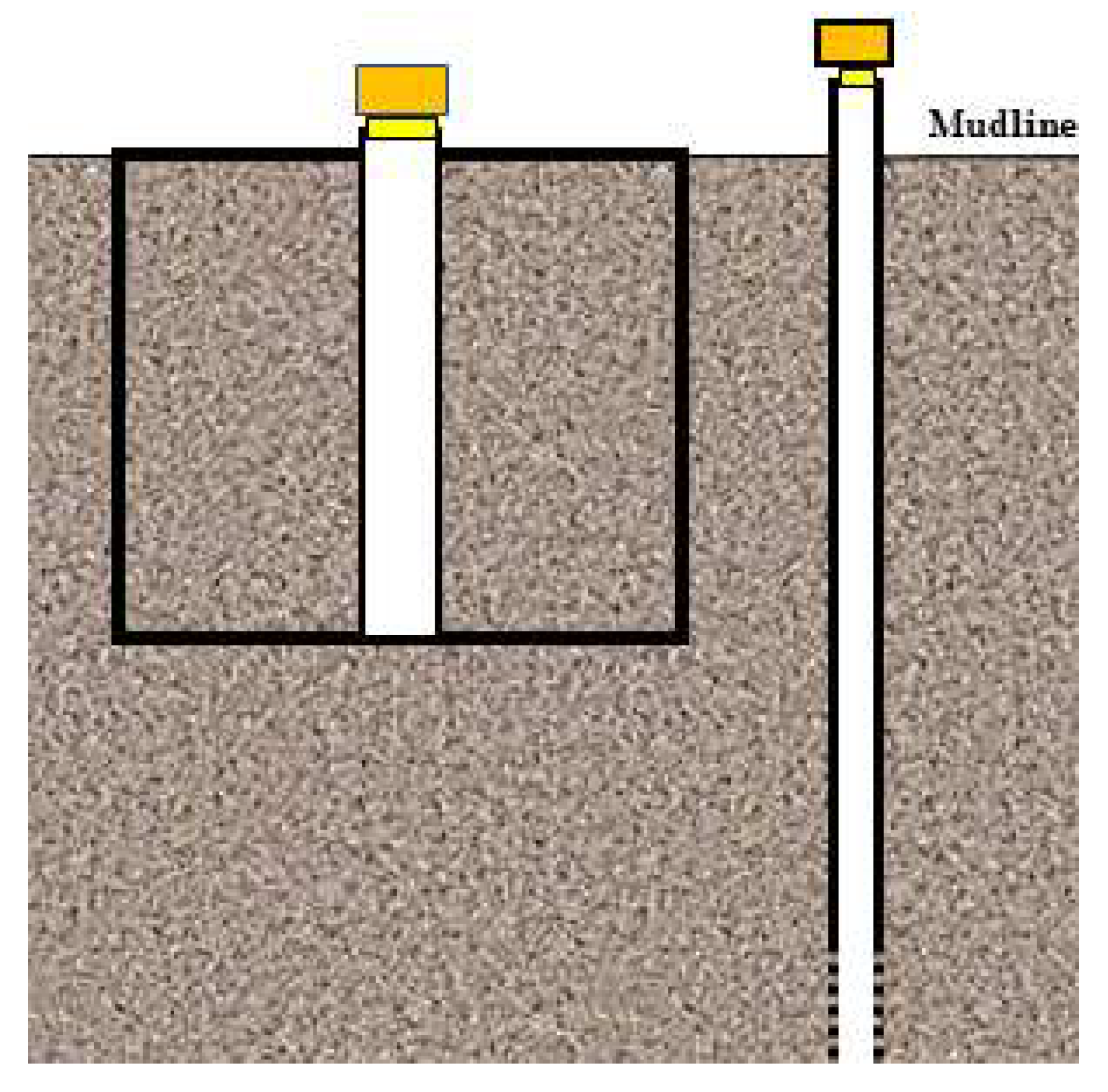
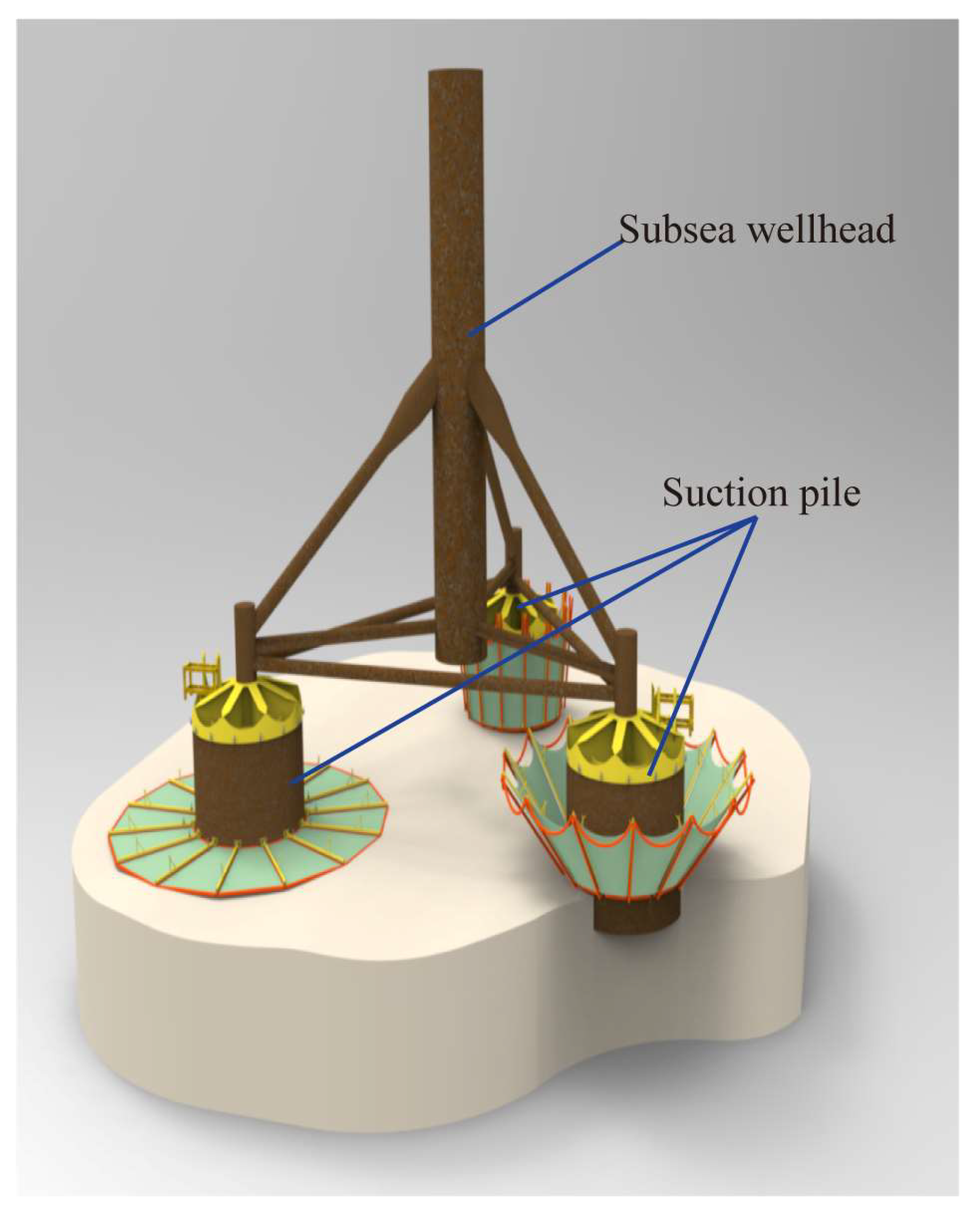



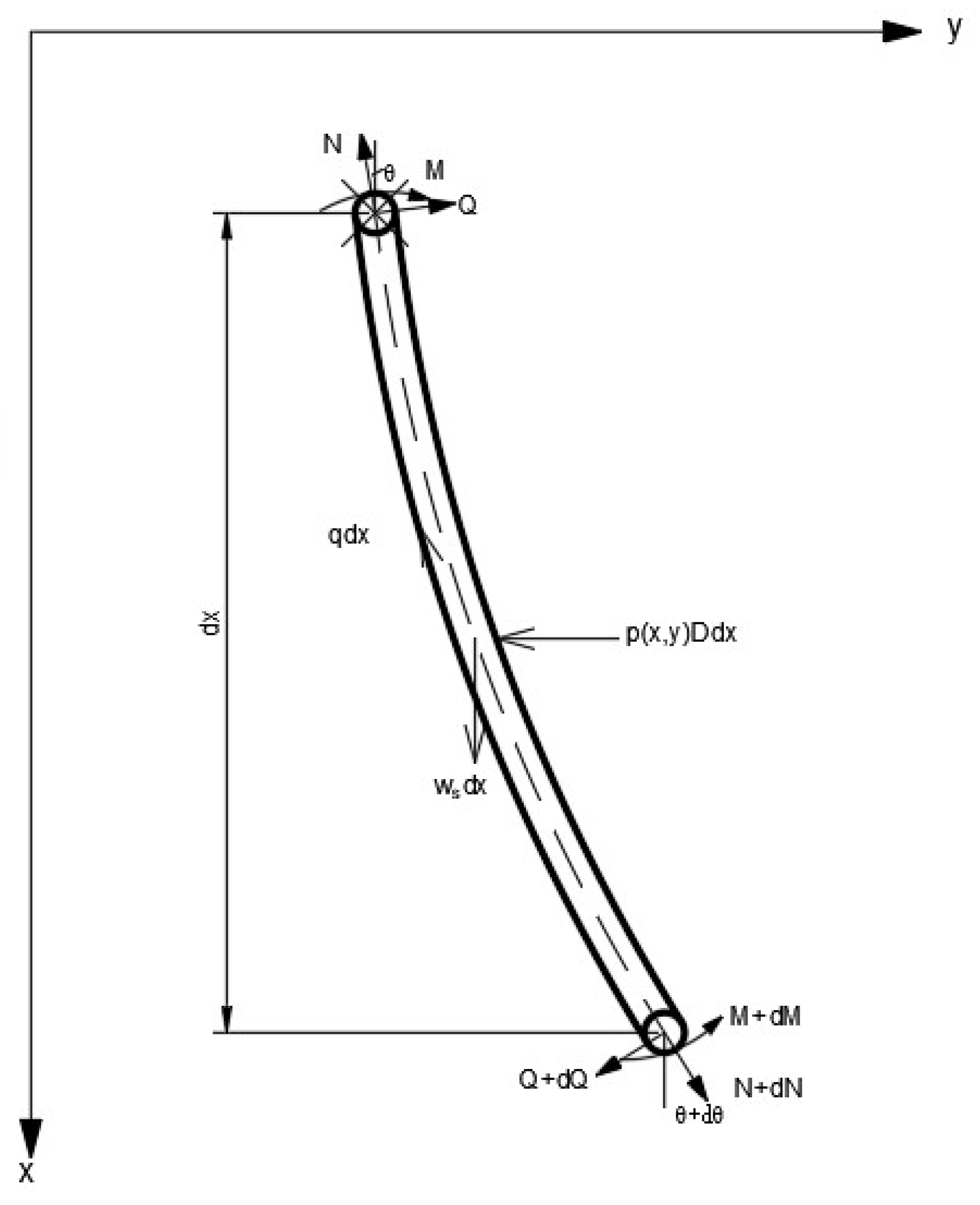
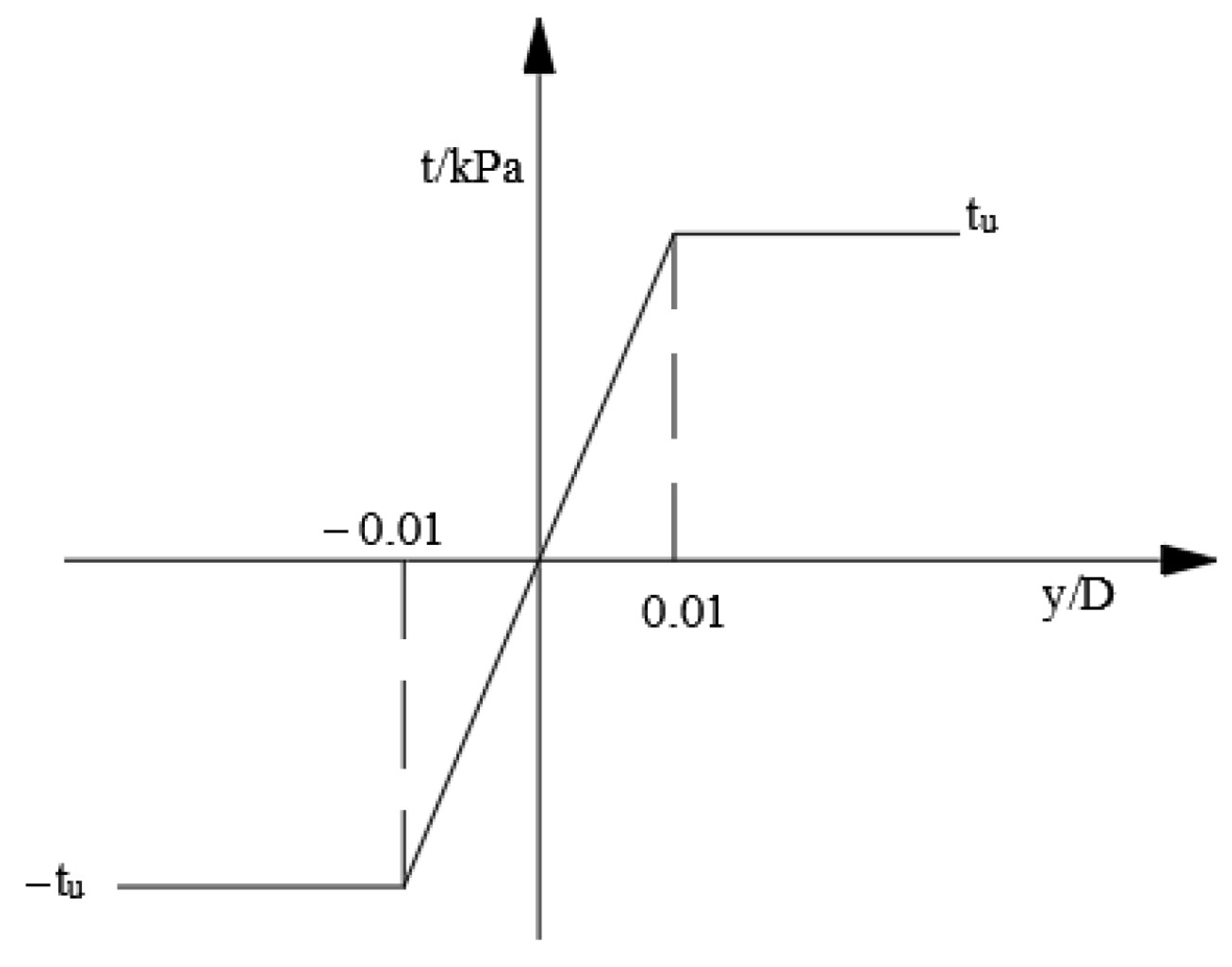
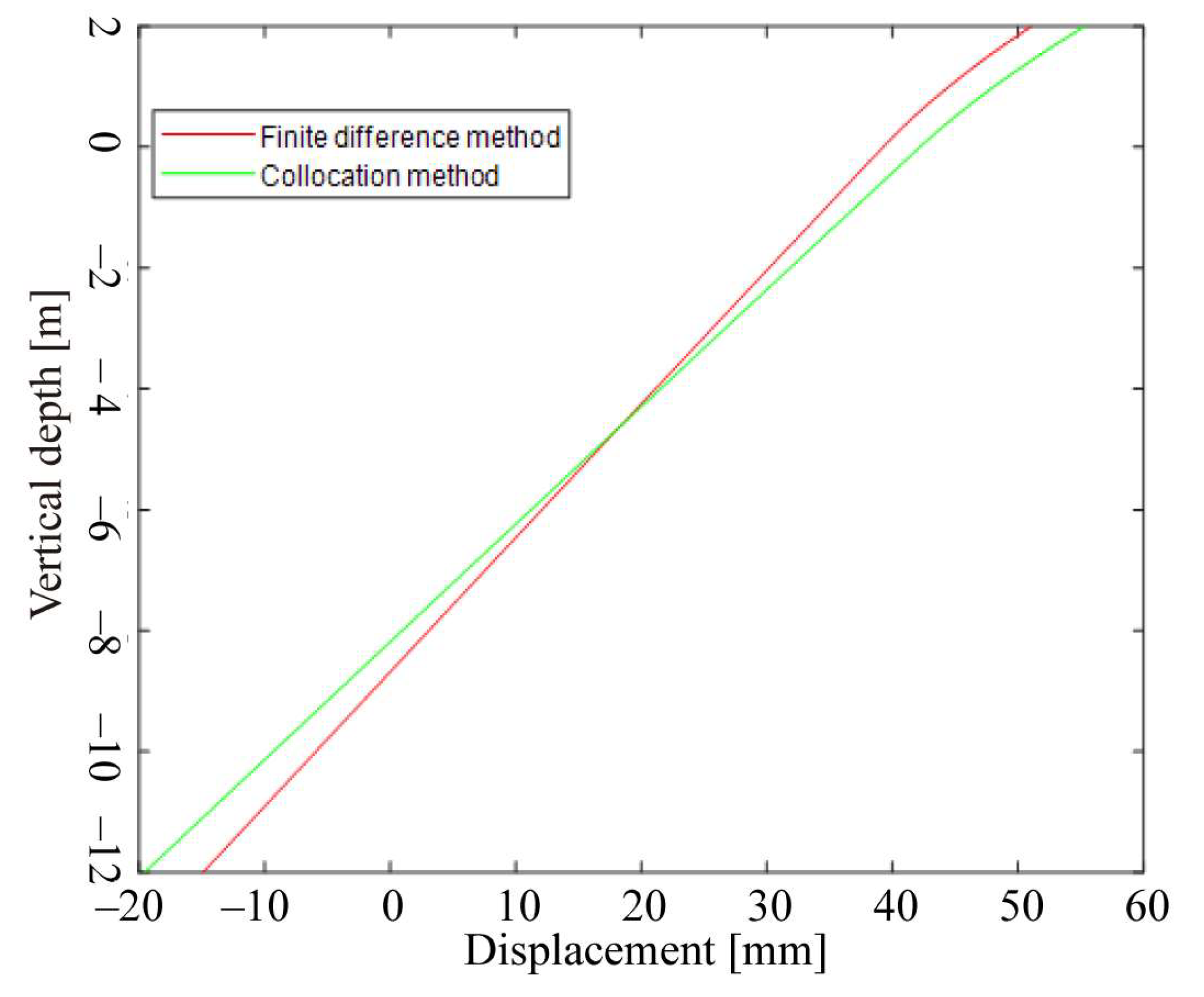
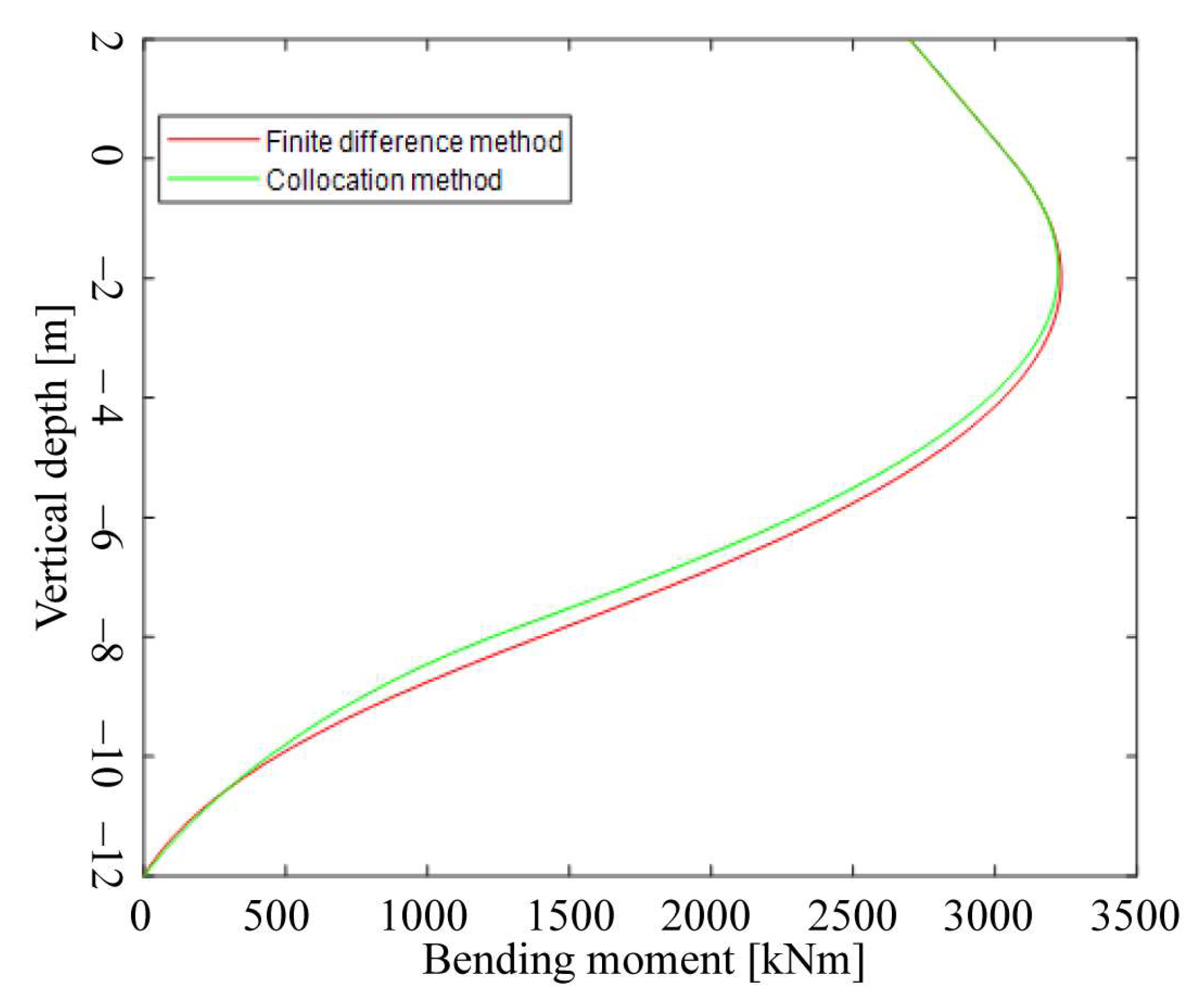
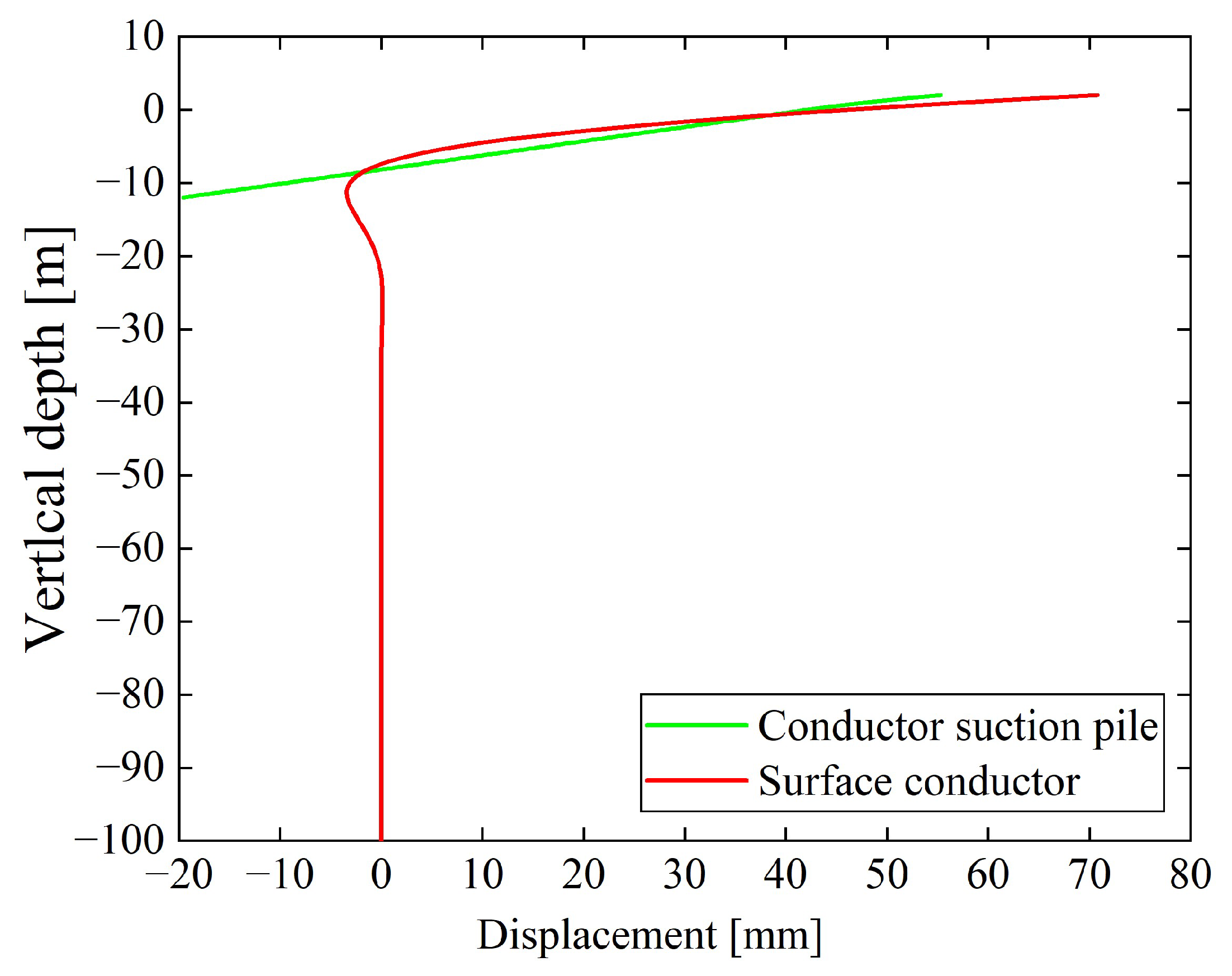
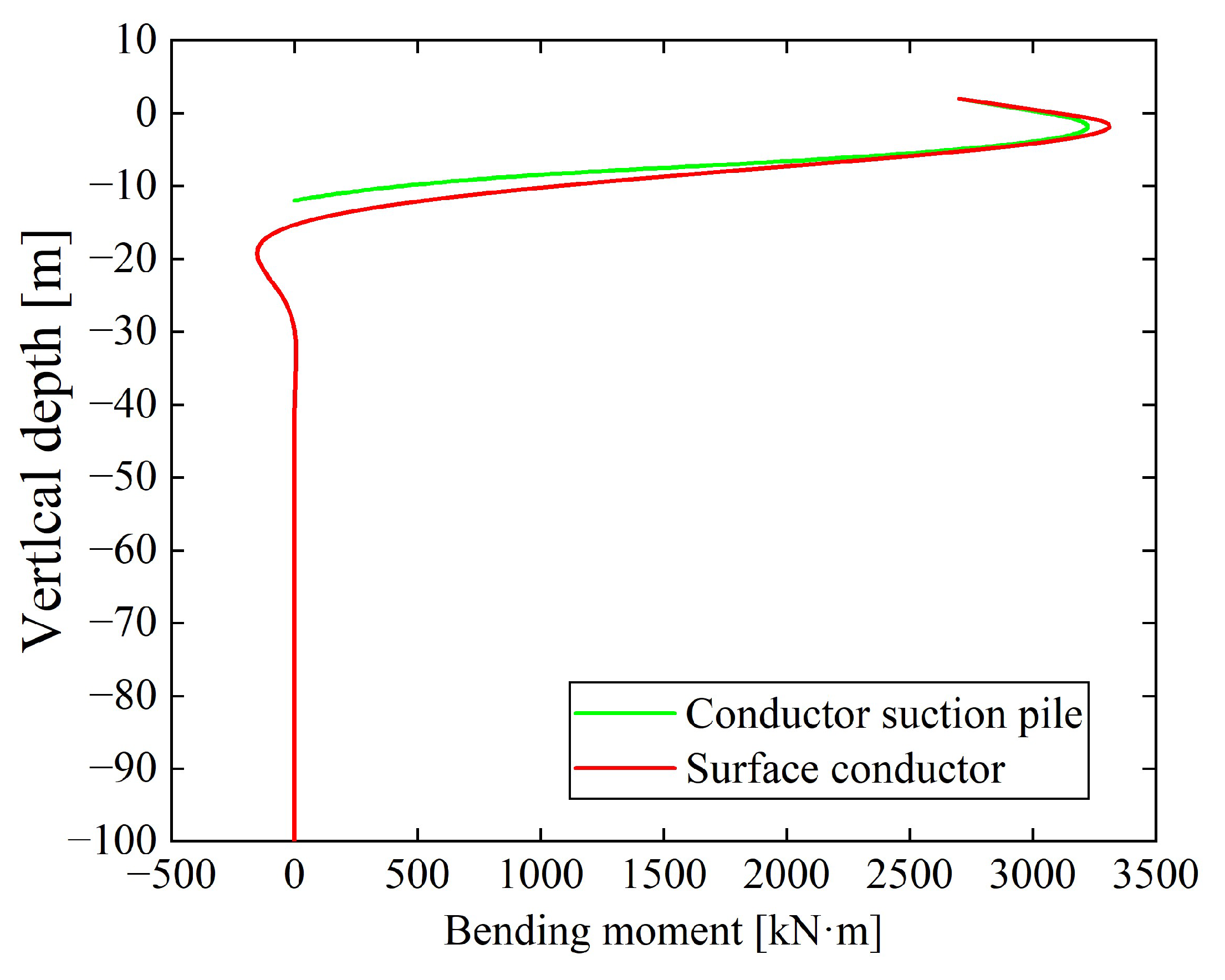
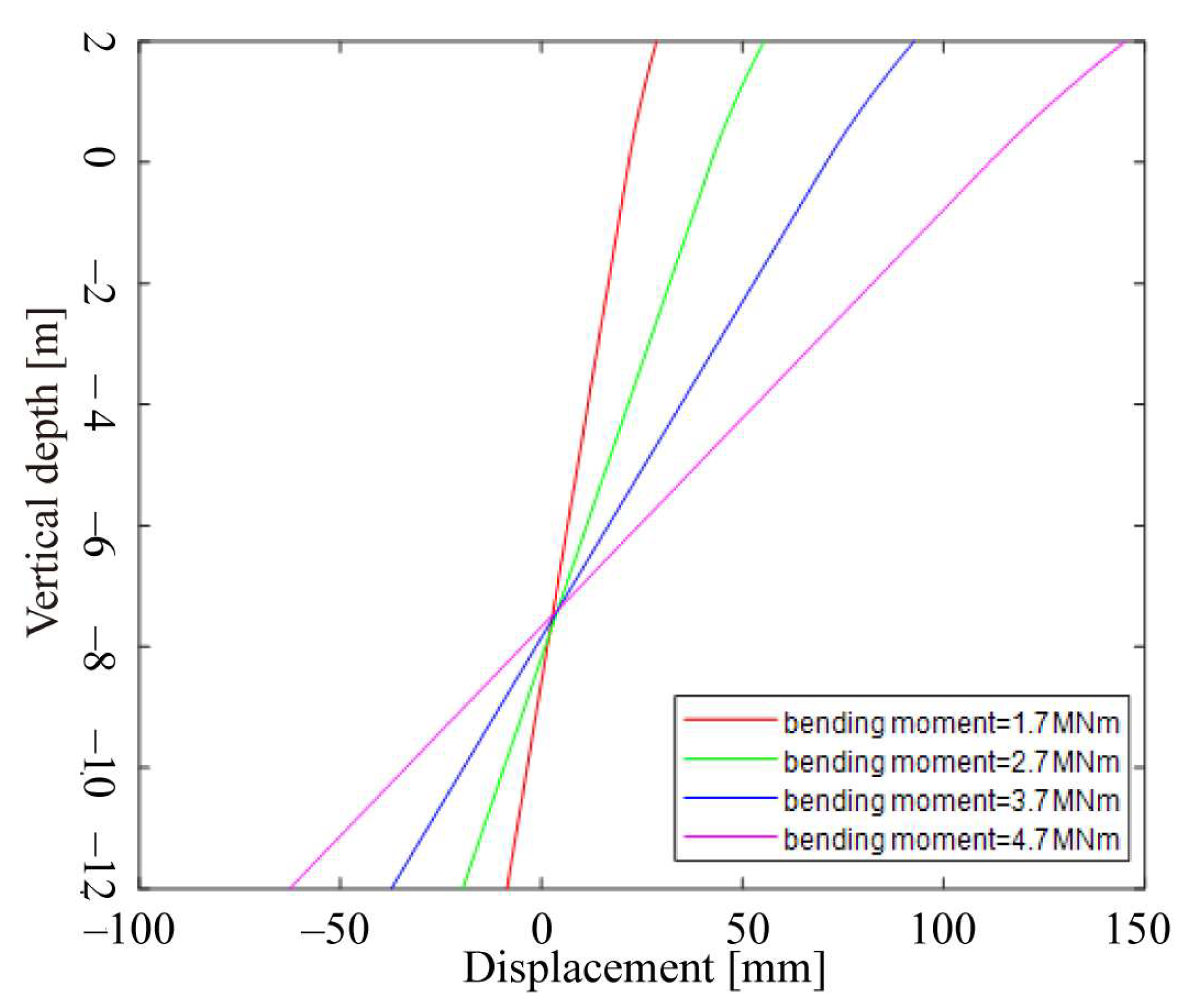
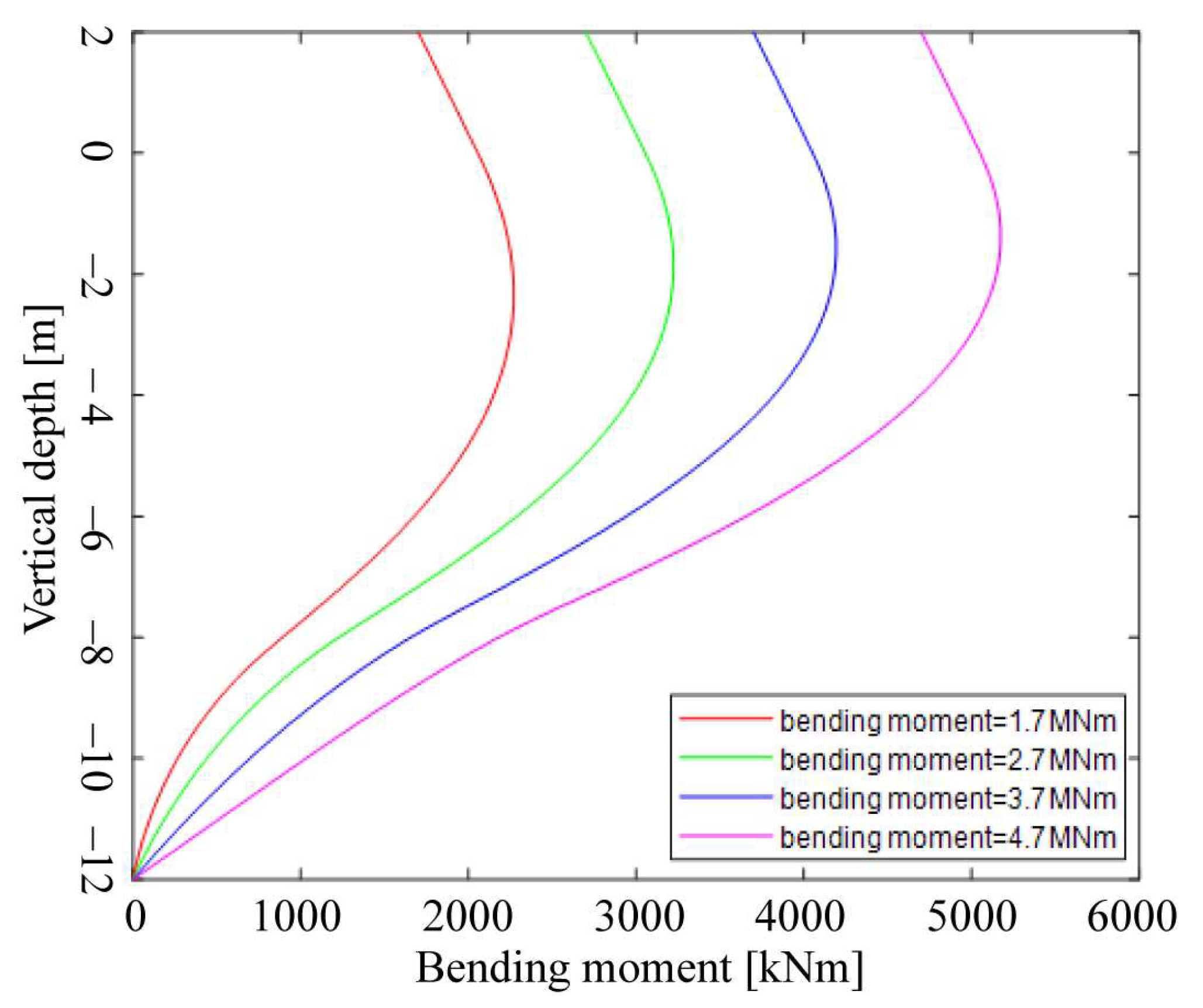
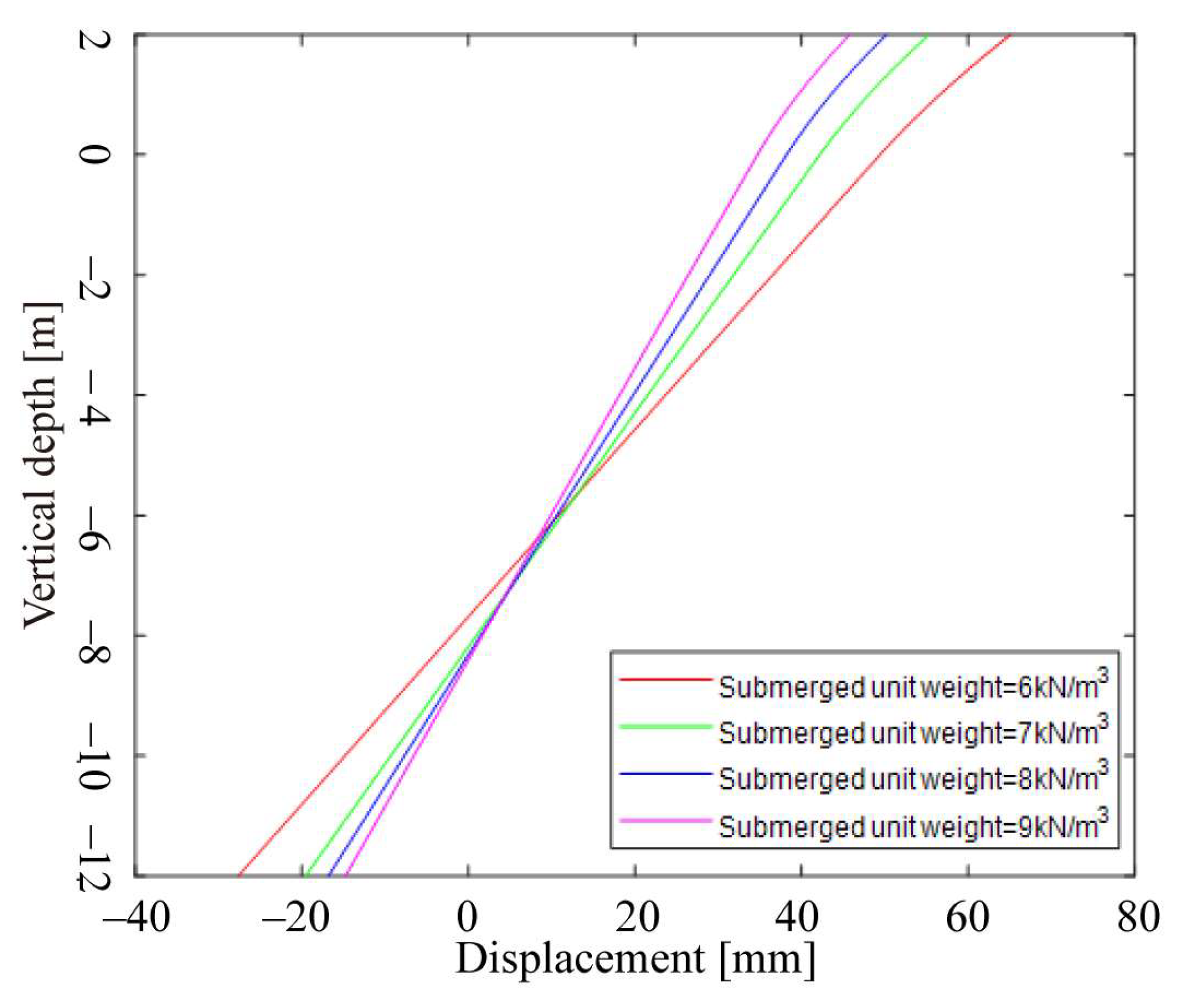
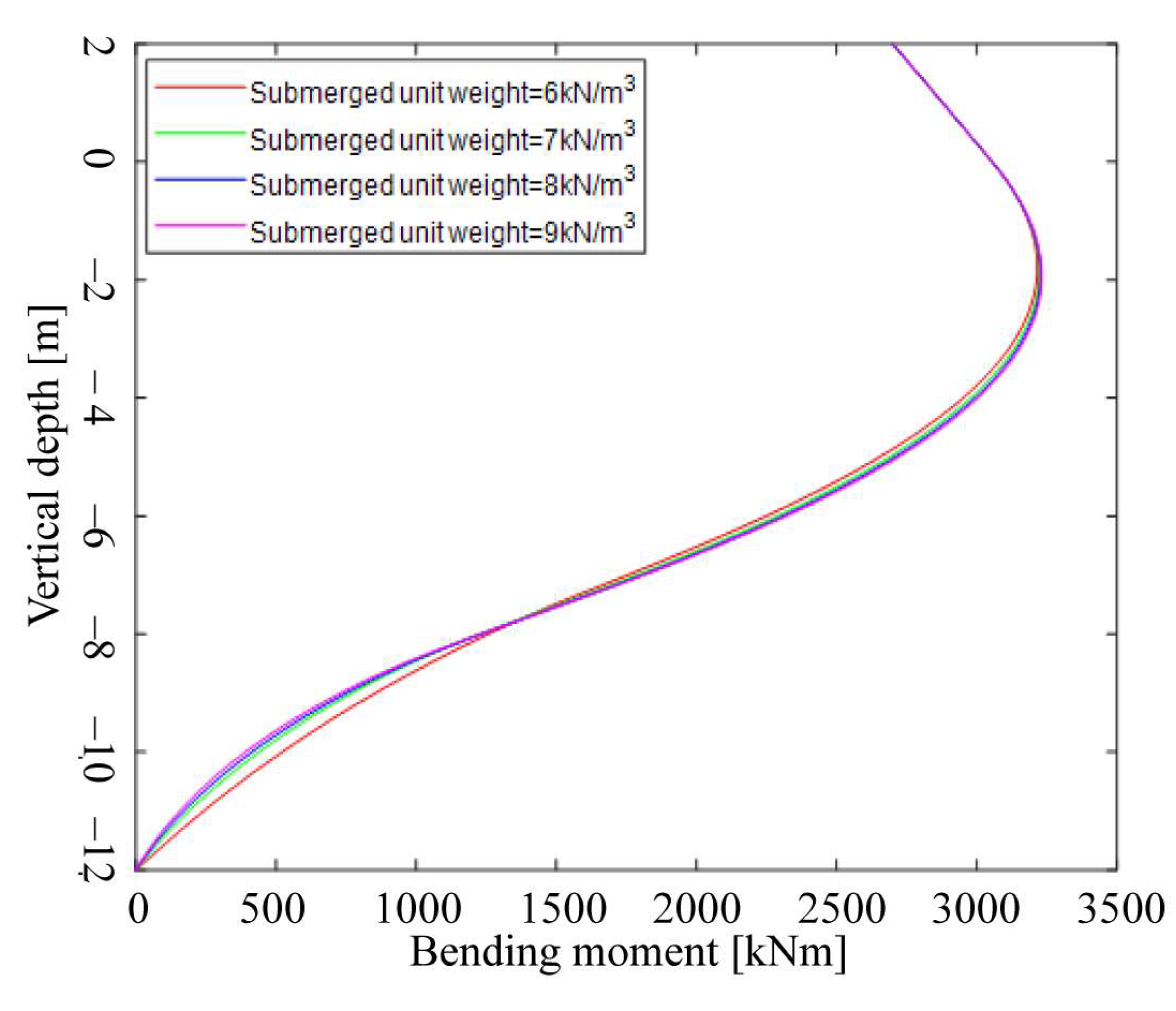
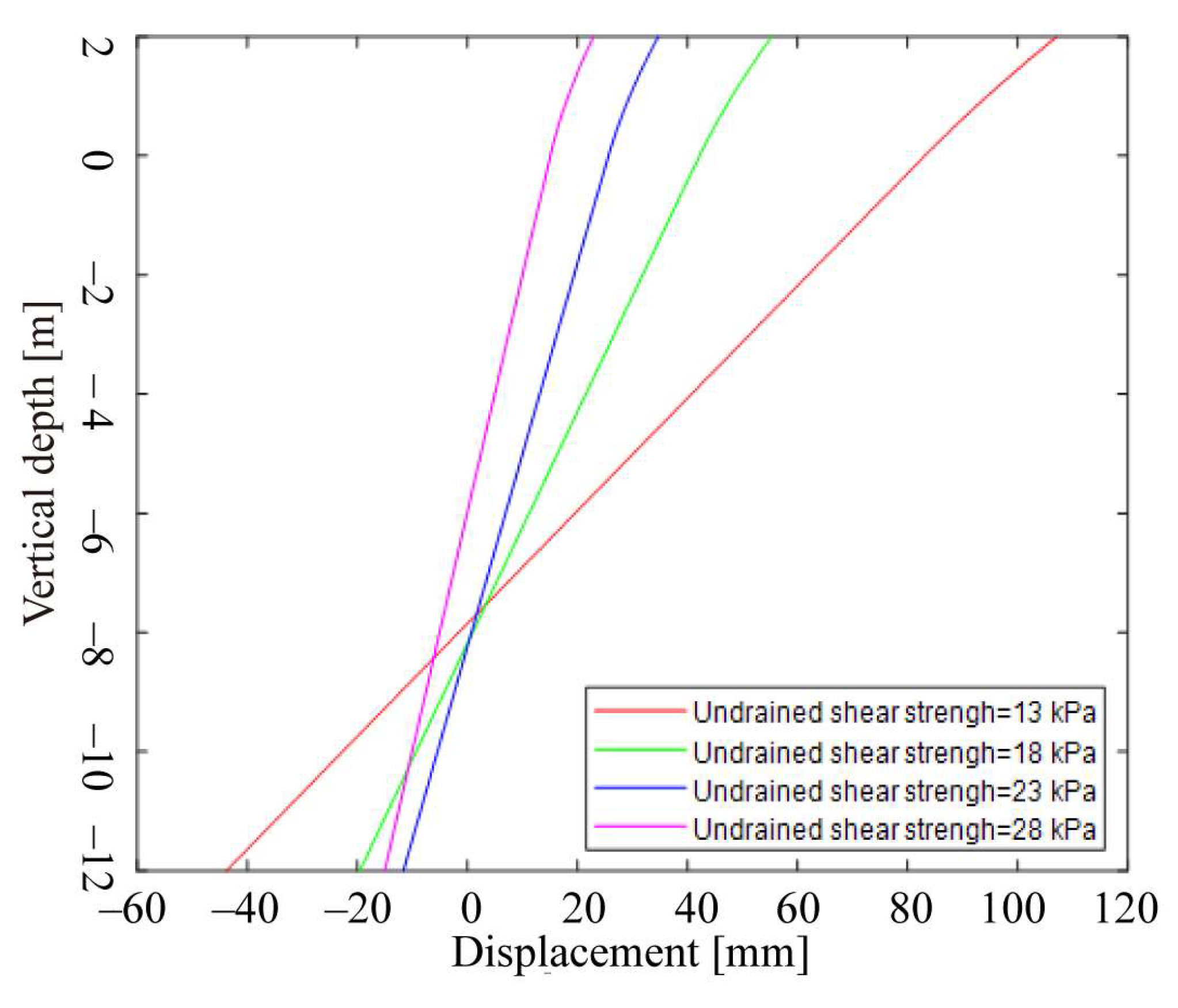
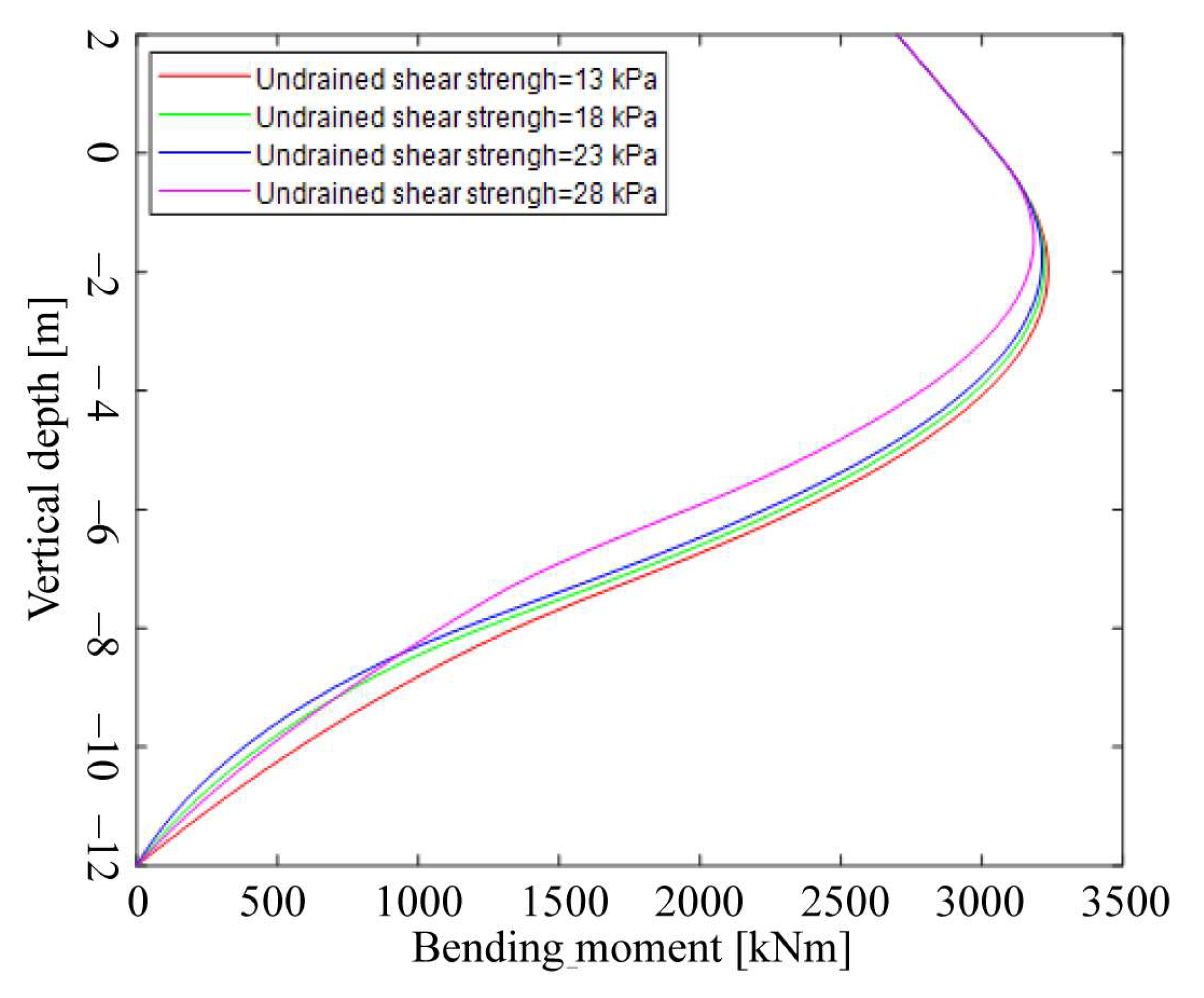
| Project/Unit | Numerical Value | Project/Unit | Numerical Value |
|---|---|---|---|
| Pile O.D./m | 6 | Modulus of elasticity of steel/GPa | 210 |
| Pile wall thickness/m | 0.0254 | Submerged unit weight of soil/kN-m−3 | 7 |
| Pile height/m | 12 | Soil modulus of elasticity/MPa | 9 |
| Conductor diameter/m | 0.9144 | Steel density/kg-m−3 | 7850 |
| Conductor wall thickness/m | 0.0381 | Wellhead height/m | 2 |
Disclaimer/Publisher’s Note: The statements, opinions and data contained in all publications are solely those of the individual author(s) and contributor(s) and not of MDPI and/or the editor(s). MDPI and/or the editor(s) disclaim responsibility for any injury to people or property resulting from any ideas, methods, instructions or products referred to in the content. |
© 2024 by the authors. Licensee MDPI, Basel, Switzerland. This article is an open access article distributed under the terms and conditions of the Creative Commons Attribution (CC BY) license (https://creativecommons.org/licenses/by/4.0/).
Share and Cite
Li, S.; Yang, J.; Zhu, G.; Wang, J.; Huang, Y.; Jiang, K. Research on Lateral Load Bearing Characteristics of Deepwater Drilling Conductor Suction Pile. Energies 2024, 17, 1163. https://doi.org/10.3390/en17051163
Li S, Yang J, Zhu G, Wang J, Huang Y, Jiang K. Research on Lateral Load Bearing Characteristics of Deepwater Drilling Conductor Suction Pile. Energies. 2024; 17(5):1163. https://doi.org/10.3390/en17051163
Chicago/Turabian StyleLi, Shuzhan, Jin Yang, Guojing Zhu, Jiakang Wang, Yi Huang, and Kun Jiang. 2024. "Research on Lateral Load Bearing Characteristics of Deepwater Drilling Conductor Suction Pile" Energies 17, no. 5: 1163. https://doi.org/10.3390/en17051163
APA StyleLi, S., Yang, J., Zhu, G., Wang, J., Huang, Y., & Jiang, K. (2024). Research on Lateral Load Bearing Characteristics of Deepwater Drilling Conductor Suction Pile. Energies, 17(5), 1163. https://doi.org/10.3390/en17051163






